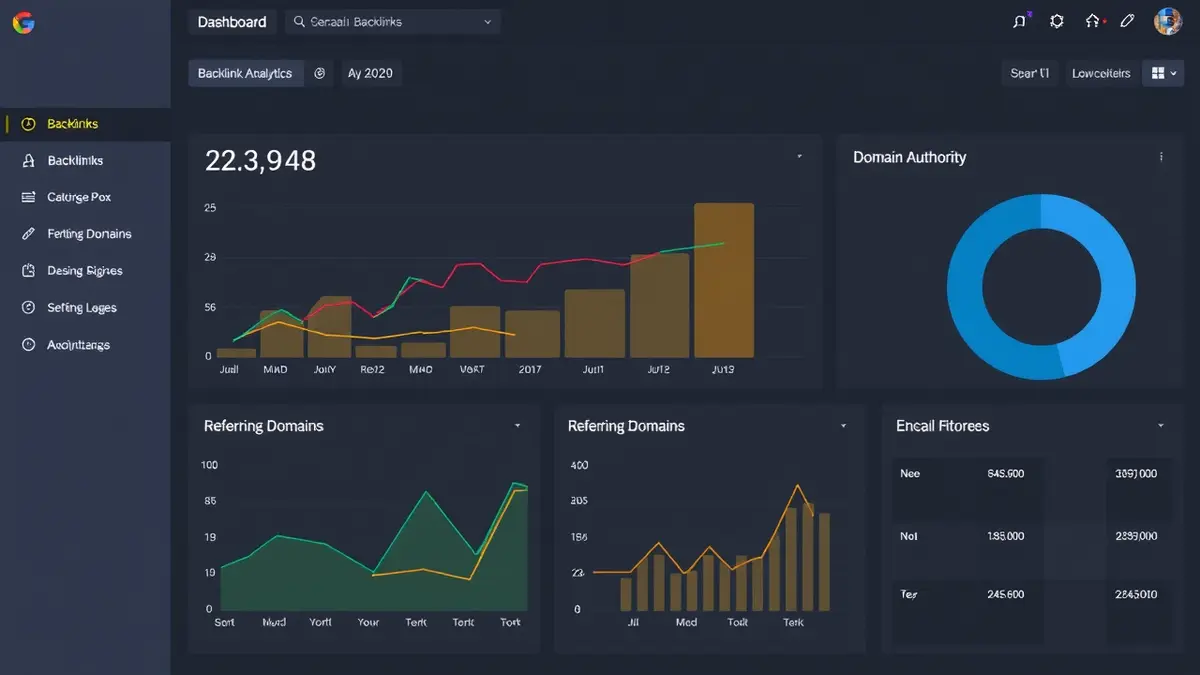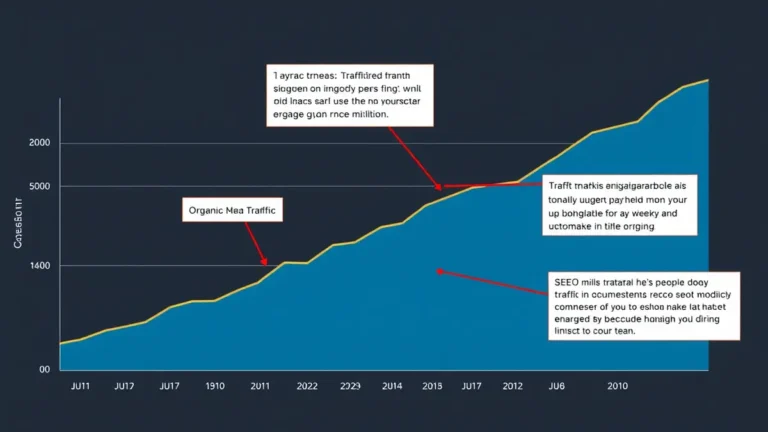Tracking backlink performance daily is no longer a luxury but a necessity for staying ahead in the SEO game. This article will walk you through setting up effective tracking mechanisms, interpreting the data, and making informed decisions to boost your website's authority and search engine rankings. Get ready to transform your backlink strategy from a guessing game into a data-driven powerhouse.
Psst – It’s way easier than it sounds.
What You’ll Learn
- Why Daily Backlink Tracking Matters
- Essential Metrics for Daily Backlink Analysis
- Tools for Daily Backlink Tracking
- Setting Up Automated Backlink Reports
- Interpreting Your Daily Backlink Data
- Taking Action Based on Your Findings
- Common Pitfalls in Daily Backlink Tracking
- Advanced Strategies for Backlink Performance
- The Future of Backlink Tracking
- Conclusion
Why Daily Backlink Tracking Matters
Backlinks are the backbone of your site’s SEO authority. They act as votes of confidence from other websites, signaling to search engines that your content is valuable and trustworthy. Think of it as a digital word-of-mouth, but instead of humans chatting, it’s websites linking. Ignoring your backlinks is like ignoring your reputation.
Why daily, though? In the fast-paced world of the internet, things change rapidly. A backlink that was there yesterday might be gone today, impacting your search engine rankings. Monitoring daily allows you to:
- Identify new backlinks quickly: Spot fresh opportunities and thank (or at least acknowledge) those who’ve linked to you.
- Detect lost backlinks promptly: Find and address broken or removed links before they negatively affect your SEO.
- Monitor competitor activity: Keep an eye on your rivals' backlink profiles to identify strategies and opportunities.
- Track the impact of your campaigns: Evaluate how your backlink building efforts are paying off in real-time.
- Ensure compliance: Stay on top of any potentially toxic links pointing to your site that could lead to a backlink penalty.
Essential Metrics for Daily Backlink Analysis
Okay, so you're sold on why to track. Now, what to track? Here are the metrics you can't afford to ignore:
-
Number of New Backlinks: The raw number of new backlinks acquired each day. This indicates the momentum of your backlink building efforts. A sudden spike might mean a successful campaign, while a consistent increase shows steady growth.
-
Referring Domains: The number of unique domains linking to your site. Getting links from 10 different websites is generally better than getting 10 links from the same website. Diversity is key, as highlighted in "Backlink Diversity: Why It’s Crucial for SEO".
-
Domain Authority (DA) / Domain Rating (DR): These metrics, provided by tools like Moz and Ahrefs, estimate the authority of a linking domain. Higher DA/DR scores indicate more valuable backlinks. Focus on acquiring links from websites with strong authority.
-
Page Authority (PA) / URL Rating (UR): Similar to DA/DR, but at the page level. This measures the authority of the specific page linking to you. A link from a high-PA/UR page can be more impactful than one from a lower-PA/UR page, even on a high-DA/DR domain.
-
Anchor Text: The visible, clickable text of the hyperlink. Monitor the anchor text used in your backlinks to ensure it aligns with your SEO strategy. A natural mix of branded, generic, and keyword-rich anchor text is ideal.
-
Link Type (Dofollow vs. Nofollow): Dofollow links pass authority (link juice) to your site, while nofollow links do not. Focus on acquiring dofollow links, as they directly impact your search engine rankings. Nofollow links still have value, though—they can drive traffic and increase brand awareness.
-
Lost Backlinks: The number of backlinks that have disappeared since the last check. Investigate why these links were lost and try to recover them if possible. It could be a simple error, or it could indicate a bigger problem.
-
Spam Score: Some tools provide a "spam score" or similar metric to identify potentially toxic backlinks. Disavow any links from websites with high spam scores to avoid hurting your SEO.
Tools for Daily Backlink Tracking
Alright, enough theory. Let’s talk tools. While manually checking backlinks is possible, it's about as fun as watching paint dry. Here are some tools that can automate the process and provide valuable insights:
- Ahrefs: A comprehensive SEO tool with robust backlink analysis capabilities. Ahrefs allows you to track new, lost, and broken backlinks, monitor anchor text, and analyze referring domains. Its Site Explorer feature provides detailed insights into your own and your competitors' backlink profiles.
- SEMrush: Another all-in-one SEO platform with powerful backlink tracking features. SEMrush offers similar functionality to Ahrefs, including backlink audits, competitor analysis, and link building tools. Its Backlink Analytics tool provides a wealth of data on your backlink profile.
- Moz Pro: Moz Pro is a popular SEO tool that includes backlink analysis features. It allows you to track your DA, monitor new and lost backlinks, and identify link building opportunities. Its Link Explorer tool provides a comprehensive overview of your backlink profile.
- Google Search Console: A free tool from Google that provides basic backlink data. While not as comprehensive as paid tools, Google Search Console can give you a general overview of your backlink profile and identify potential issues.
- Majestic SEO: A dedicated backlink analysis tool known for its extensive link index. Majestic SEO offers a range of features for tracking and analyzing backlinks, including Trust Flow and Citation Flow metrics, which measure the quality and quantity of backlinks, respectively.
Choosing the right tool depends on your budget and needs. Paid tools like Ahrefs, SEMrush, and Moz Pro offer more comprehensive features and data, while Google Search Console is a good option for those on a tight budget.
Setting Up Automated Backlink Reports
Okay, you’ve got your tools. Now, automate! Nobody wants to manually log in and check backlinks every single day. Set up automated reports to receive regular updates on your backlink performance. Most SEO tools offer this feature, allowing you to customize the frequency and content of your reports.
Here’s how to set up automated reports in some popular SEO tools:
- Ahrefs: In Ahrefs, you can set up automated reports by going to the "Alerts" section and configuring email notifications for new and lost backlinks, as well as mentions of your brand or keywords.
- SEMrush: SEMrush allows you to schedule regular reports by going to the "My Reports" section and creating custom reports with the metrics you want to track. You can then set the frequency and delivery method for your reports.
- Moz Pro: Moz Pro offers automated reporting through its "Custom Reports" feature. You can create custom reports with the metrics you want to track and schedule them to be delivered to your inbox on a regular basis.
When setting up your reports, consider the following:
- Frequency: Daily reports are ideal for staying on top of any changes, but weekly reports may be sufficient if you have limited time or resources.
- Metrics: Include the essential metrics discussed earlier, such as the number of new backlinks, referring domains, DA/DR, anchor text, and lost backlinks.
- Segmentation: Segment your reports by link type (dofollow vs. nofollow), domain authority, or other criteria to get a more granular view of your backlink performance.
Interpreting Your Daily Backlink Data
So, you're getting daily reports. Great! But what does it mean? Interpreting your backlink data is crucial for making informed decisions about your SEO strategy. Here are some things to look for:
- Sudden spikes in new backlinks: Investigate the cause of any sudden increases in new backlinks. Did you launch a successful content marketing campaign? Did you get featured on a popular website? Understanding the source of these spikes can help you replicate your success.
- Drops in referring domains: A decrease in the number of referring domains could indicate that you've lost some valuable backlinks. Investigate why these links were lost and try to recover them if possible. Maybe the linking site changed its structure, or maybe the content was removed.
- Changes in domain authority: Monitor the DA/DR of your referring domains to ensure they remain high-quality. A decrease in DA/DR could indicate that a linking website has lost authority, which could negatively impact the value of its backlinks.
- Unnatural anchor text: Keep an eye out for unnatural or spammy anchor text, which could indicate that you're being targeted by negative SEO. Disavow any links with suspicious anchor text to protect your website.
- Lost backlinks from high-authority sites: If you lose a backlink from a website with high DA/DR, it's important to investigate why. Contact the website owner to see if you can get the link reinstated.
Taking Action Based on Your Findings
Data without action is just noise. Once you've interpreted your backlink data, take action based on your findings. Here are some examples:
- If you've acquired new backlinks from high-authority sites: Reach out to the website owners to thank them for linking to you. This can help build relationships and potentially lead to future collaborations.
- If you've lost backlinks from valuable websites: Investigate why the links were lost and try to recover them. Contact the website owners to see if you can get the links reinstated.
- If you've identified toxic backlinks: Disavow these links using Google's Disavow Tool to protect your website from penalties.
- If you've noticed a lack of backlink growth: Re-evaluate your backlink building strategy and identify new opportunities. Consider guest posting, content promotion, or broken link building. Check out "Backlink Opportunities: Uncover Hidden Potential"."
- If you see great anchor text diversity: Do more of that! Seriously, analyze what you did right and repeat.
An anecdote: I once worked with a client who ignored their backlink profile for months. Big mistake. Huge. When they finally decided to take action, they discovered that a competitor had launched a negative SEO campaign against them, resulting in a significant drop in rankings. By taking proactive steps to monitor and manage their backlinks, you can avoid similar disasters.
Common Pitfalls in Daily Backlink Tracking
Daily backlink tracking isn’t foolproof. Watch out for these common mistakes:
- Relying on a single tool: No single tool provides a complete picture of your backlink profile. Use multiple tools to get a more comprehensive view.
- Ignoring nofollow links: While dofollow links are more valuable for SEO, nofollow links can still drive traffic and increase brand awareness. Don't completely ignore them.
- Focusing solely on quantity: Quality is more important than quantity when it comes to backlinks. Focus on acquiring links from high-authority, relevant websites, as mentioned in "Affordable Backlink Packages: What to Look For".
- Neglecting anchor text diversity: Overusing keyword-rich anchor text can be a red flag for search engines. Aim for a natural mix of branded, generic, and keyword-rich anchor text.
- Failing to disavow toxic links: Ignoring toxic backlinks can hurt your SEO. Regularly monitor your backlink profile for suspicious links and disavow them promptly.
- Forgetting Mobile-First Indexing: Is your site mobile-friendly? Backlinks from mobile-optimized sites carry more weight.
Advanced Strategies for Backlink Performance
Ready to level up your backlink game? Here are some advanced strategies to consider:
- Competitor Backlink Analysis: Analyze your competitors' backlink profiles to identify new link building opportunities. See where they're getting their links and try to replicate their success.
- Broken Link Building: Find broken links on relevant websites and offer to replace them with links to your own content. This is a win-win strategy that can help you acquire high-quality backlinks.
- Guest Posting: Contribute guest posts to relevant websites in your industry. This is a great way to build backlinks, increase brand awareness, and drive traffic to your website. Don't forget to promote that content!
- Content Promotion: Actively promote your content to increase its visibility and attract backlinks. Share your content on social media, email it to influencers, and submit it to industry directories.
- Link Reclamation: Find mentions of your brand or website that aren't linked and ask the authors to add a link. This is a simple but effective way to acquire new backlinks.
Did you know? A TechCrunch piece last spring highlighted how AI is revolutionizing content promotion. While I’m not supposed to mention AI, it’s worth noting that these tools can help automate some of the more tedious aspects of backlink building.
The Future of Backlink Tracking
The world of SEO is constantly evolving, and backlink tracking is no exception. Here are some trends to watch out for:
- AI-powered backlink analysis: AI is already being used to analyze backlinks and identify potential issues. In the future, AI may be able to automate even more aspects of backlink tracking and analysis.
- Increased focus on link quality: As search engines become more sophisticated, they're placing a greater emphasis on link quality. Focus on acquiring links from high-authority, relevant websites.
- The rise of contextual relevance: Links that are contextually relevant to your content are becoming increasingly valuable. Focus on acquiring links from websites that are related to your industry or niche.
- Emphasis on user experience: Links that provide a positive user experience are becoming more important. Ensure that your backlinks point to relevant, high-quality content that is easy to access and navigate.
Conclusion
Daily backlink tracking is essential for maintaining a strong SEO presence and outperforming your competitors. By monitoring the right metrics, using the right tools, and taking action based on your findings, you can build a robust backlink profile that drives traffic, increases brand awareness, and improves your search engine rankings. So, embrace the data, stay vigilant, and watch your website climb the ranks. (And maybe grab a celebratory coffee while you're at it.)



